We’ve talked about taking Safety at Sea for years, and this offseason presented the perfect opportunity to finally do it. This past weekend, we completed a session hosted by the Cruising Club of America at Roger Williams University in Bristol, RI, and it was a fantastic experience.
Prior to our in-person session, we had to complete US Sailing’s Safety at Sea online course, consisting of 15 units covering a range of topics from marine weather and storm tactics to safety gear and maintenance, crew overboard and more. Some of the material reinforced what I already knew, and some was brand new and/or emphasized skills I need to develop. It was a great foundation for an information-packed day.
The full day session was broken up between classroom time and hands-on learning. I was admittedly a little nervous about the hands-on portion, but it was so good to practice these skills in a controlled environment with experts on hand to walk us through the proper/safe way to do things, rather than to try to figure it out in the heat of a real situation. That’s the whole point of taking the course in the first place.
Flood
My group’s first hands-on session was flooding. We were broken out into five groups of two and asked to identify and stop the source of flooding on a sabotaged section of hull. We had a table of items that may (or may not) be helpful at our disposal. The first two groups had obvious hose leaks, but ours was more challenging. We had a loose through-hull in an enclosed compartment. The source of the leak wasn’t obvious at first, but after ruling out other options, I went back and looked again, this time noting considerably more water in the space and a few small bubbles coming from the through-hull. Touching the seacock handle was enough to knock it free, so I grabbed a wooden bung to fill the hole. I’m actually glad we got a more challenging problem to diagnose – it taught me to be more careful in my observations.
Flares
Next, we went down to the shore to learn about flares. First, they demonstrated canned orange smoke, which burns for four minutes and creates a highly visible trail. Then they demonstrated a 500 candle power red torch flare vs. a 15,000 candle power red torch flare. While it may seem obvious, the difference in visibility was staggering. Then it was our turn, and it’s as easy as it looks – grab the end with the hand grip (not all flares have these, but we’ll make sure our next ones do!), twist off the cap from the other end, extend the flare, point it down range, pull the string. Next, we got to try a SOLAS parachute flare, designed to ascend to 1,000 ft. They’re a little harder to ignite (or it could have been my freezing fingers having a hard time pulling the string – it started snowing hard just as it was my turn) but really visible (up to 28 miles in good conditions). The flares were straightforward to use, but I’m glad I won’t have to try to figure it out if I ever need to use one in reality.
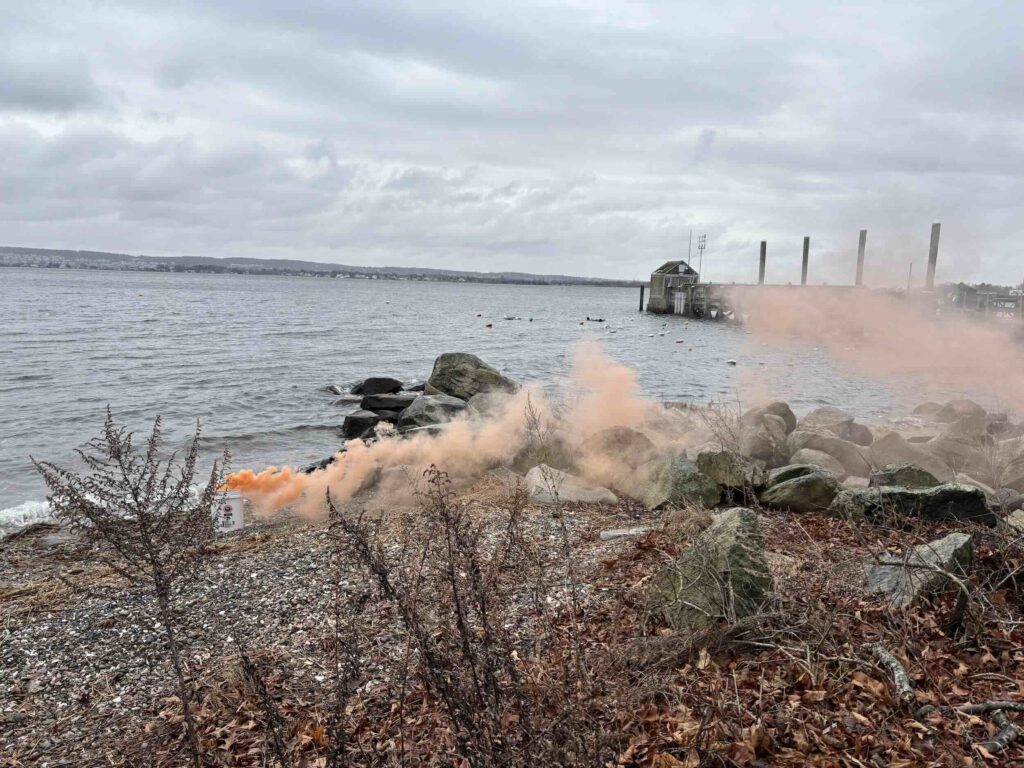
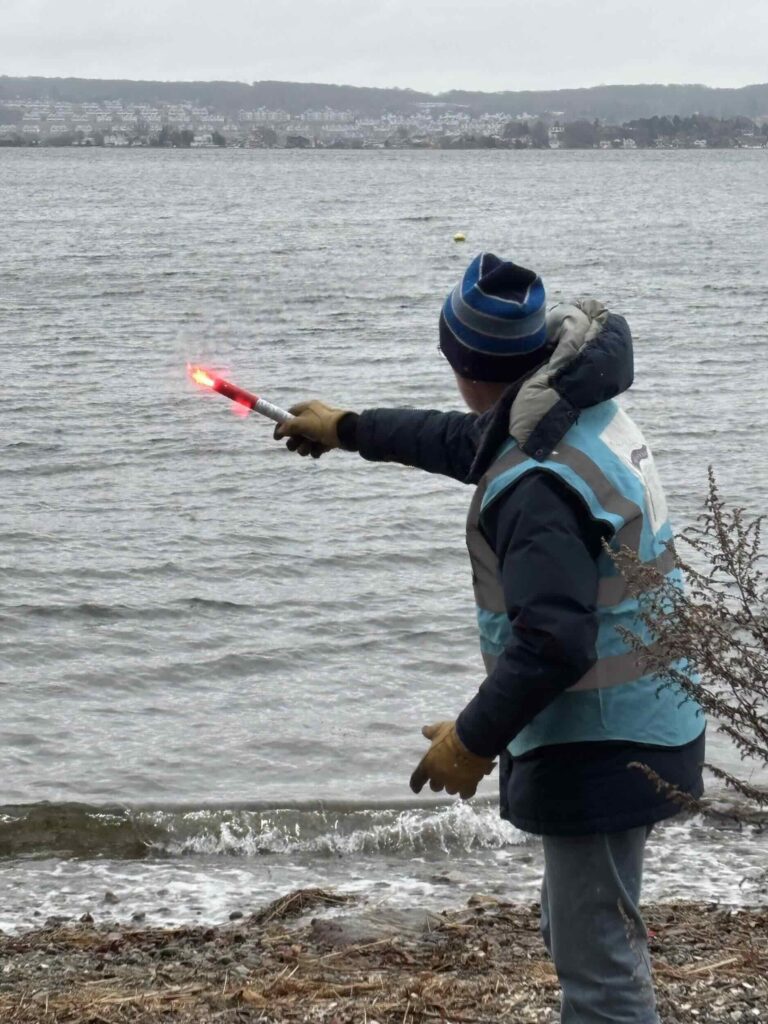
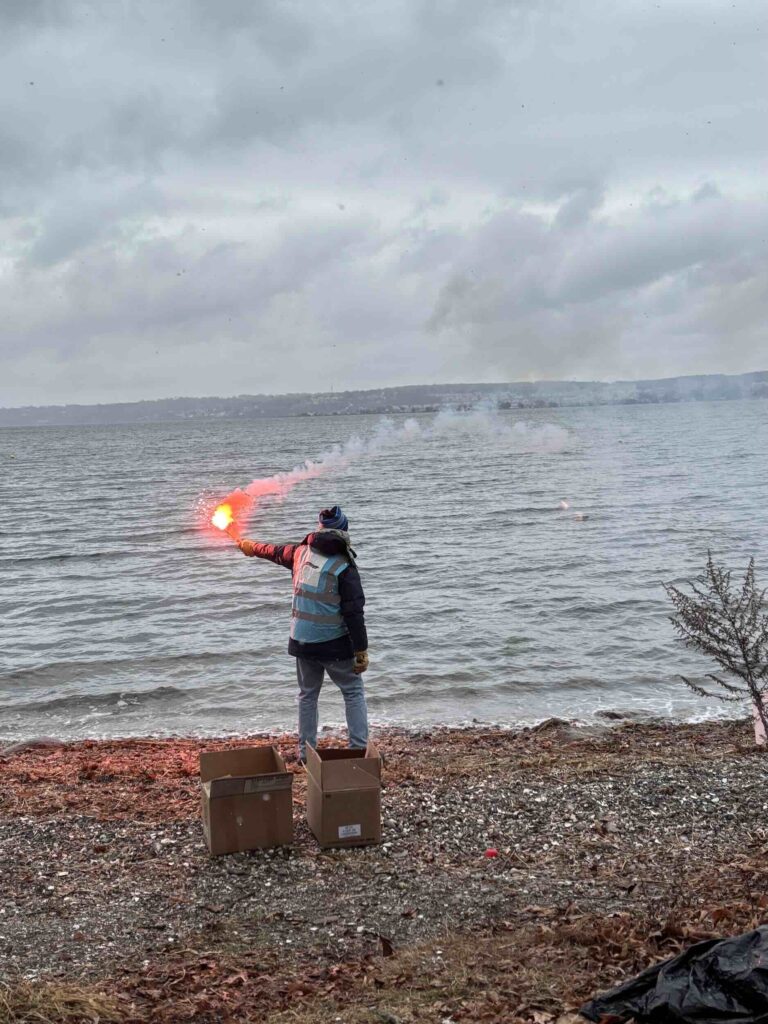
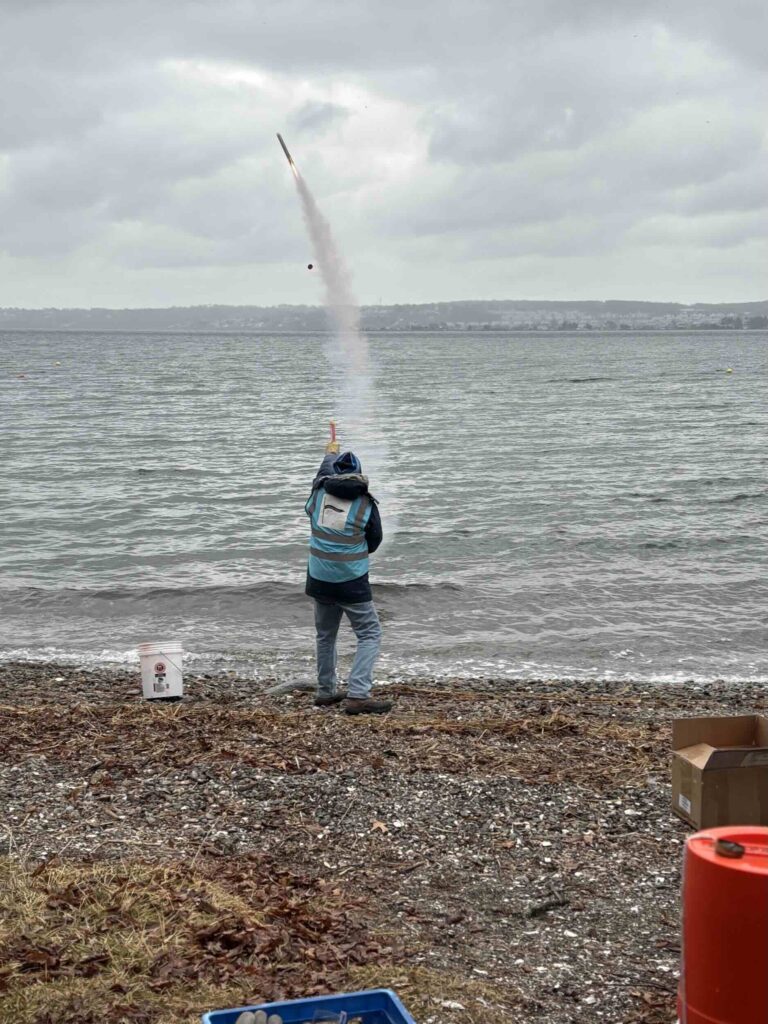
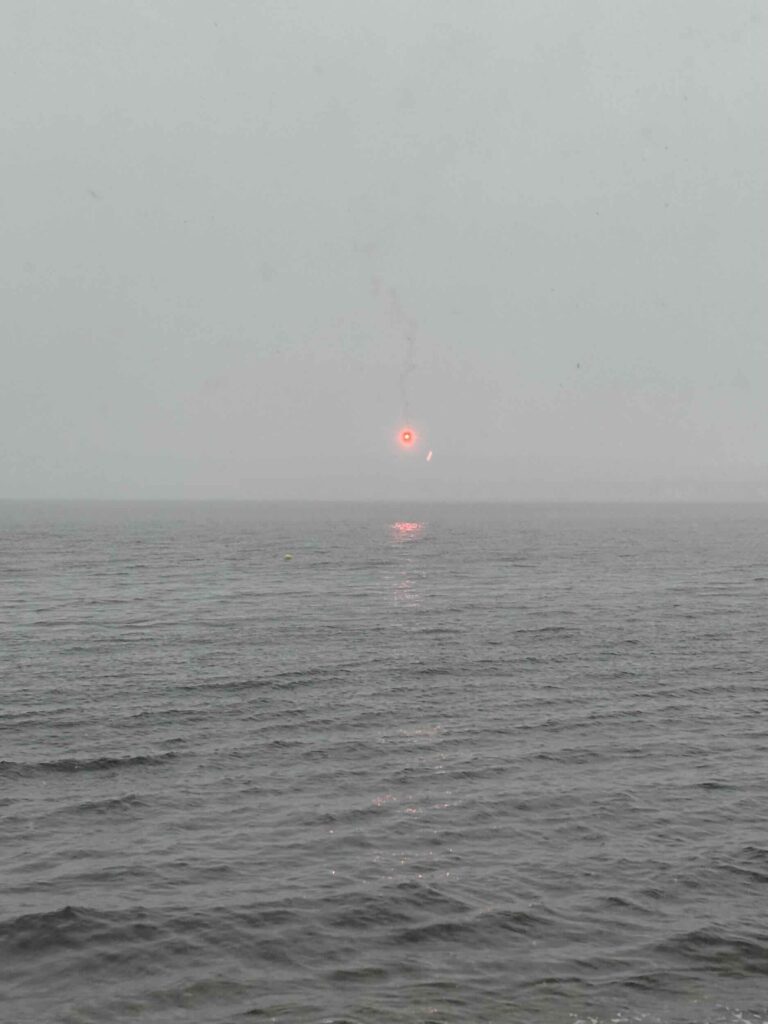
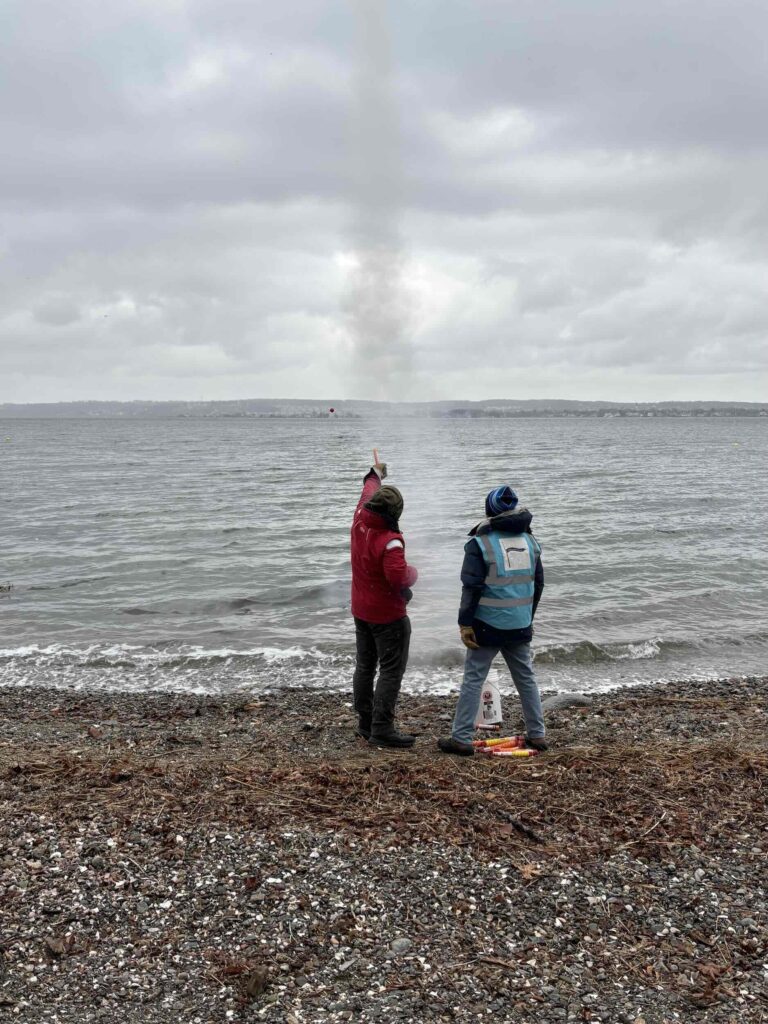
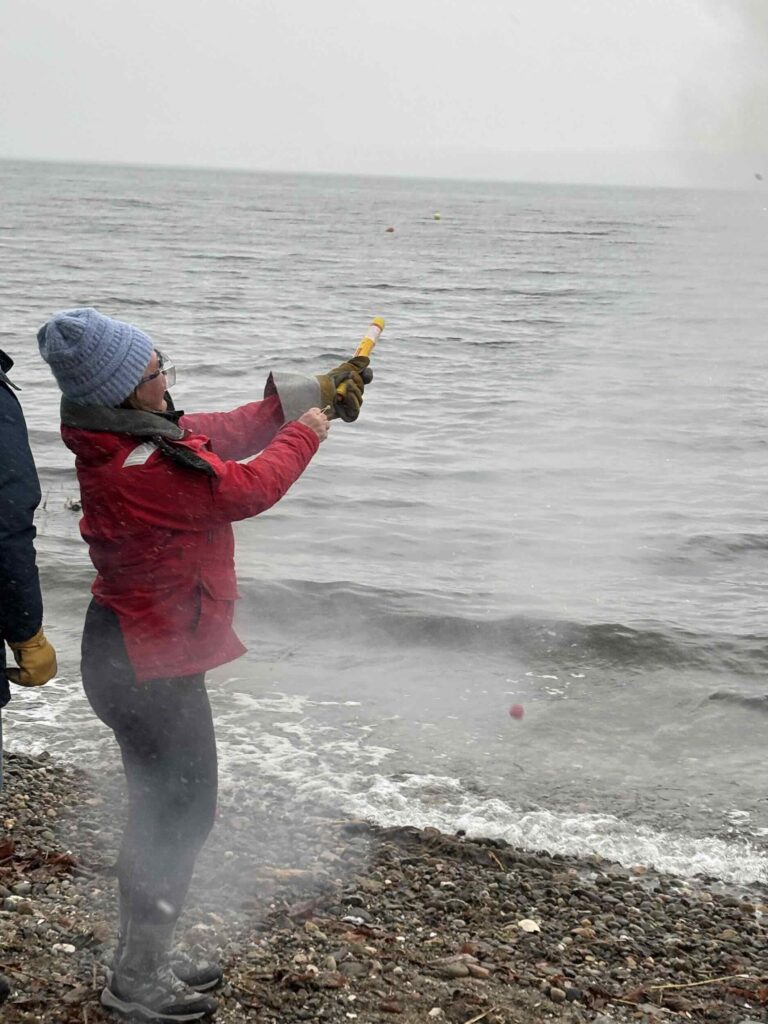
We need to update our flares this year, so we’ll be ditching our shotgun-style flares in favor of the rocket flares and picking up a can of orange smoke (along with eye protection and a welding glove, to be kept along with the flares). We’ll still keep our expired flares as back-ups, but they’re woefully inadequate compared to what else is available.
Damage Control
We got a lot of good information in this section, but it was the least hands-on of the sessions – it’s also the one that’s hardest to safely simulate in a learning environment. We did get a quick demo/ hands-on using an angle grinder to cut rod rigging (guess what’s going in our damage control kit), and I learned that when a carbon fiber mast fails (which is what Windara has), it ends up with all kinds of sharp splinters, so we’re getting a couple good pairs of gloves. We also touched briefly on using a drogue, both for storm safety and emergency steerage.
Pool
This was the session I was most nervous about, but I feel like I got the most out of it (including a little peace of mind). We jumped in the pool in full gear: full clothing plus foul weather pants, jacket and boots, life jacket and tether. I was nervous about whether the life jacket would deploy and what that would feel like (and whether I’d sink like a rock with the added weight of all that clothing none of us ever wears swimming).
PFDs
It takes a couple seconds for the hydrostatic sensor to arm, but the PFD inflates quickly and does a great job of keeping your head out of the water. I found I needed to let out a little air, as it was really tight around my neck. The longer I was in the pool, the more I realized the benefit of having a crotch strap (our current PFDs don’t have them) to help pull the vest down. Without it, the vest felt like it was riding up around my head/neck. I was surprised at how easy it was to float effortlessly and at how much body heat you preserve by staying in the HELP position – when they had us spread our arms and legs, I could immediately feel the difference in temperature. It’s definitely harder to swim in a PFD… you’re limited to a backstroke, so you’re best off staying in the HELP position until rescue is on-scene. I’ll be getting a better whistle for all of our life jackets – the ones we have work in water but aren’t great.
Life Rafts
Boarding a life raft from the water is much harder than you think. Remember all that weight I was concerned about when I first jumped in? This is where it becomes a problem when you’re trying to haul yourself up. If you can, it’s definitely best to step off the boat into the raft. Otherwise, it’s best to have the strongest person get in the raft first so they can help everyone else in. I was surprised at how much water you bring into the raft with you (I now know why there are bailing sponges in the ditch kit). We were the second group to get in the raft, and there was a good few inches of standing water. I also learned that when helping your crew in, you need to be careful not to accidentally push their face into whatever water is in the raft. My life jacket or tether got hung up on something, and as I was trying to free it, the people helping me in were inadvertently dumping me face-first into the water inside the raft.
Firefighting
As part of our classroom training, we learned some fire basics: what’s needed for a fire to burn, the different classes of fires, and what types of extinguishers work on what. We also had it reinforced that you shouldn’t keep your extinguishers directly next to the potential source of fire. Why? Well, if your stove’s on fire, you don’t want to have to reach across or beside it to get your extinguisher.
I looked forward to this session since I’d never actually used a fire extinguisher. They’re are as straightforward to use as they appear, but it was good to get to try one on a real fire. We took turns with a buddy putting out a small fire, both armed with extinguishers (so that if the first one runs out before the fire is out, there’s another one at hand ready to use). They also demonstrated the use of a fire blanket and we learned about other uses for it, like shielding yourself or covering a companionway.
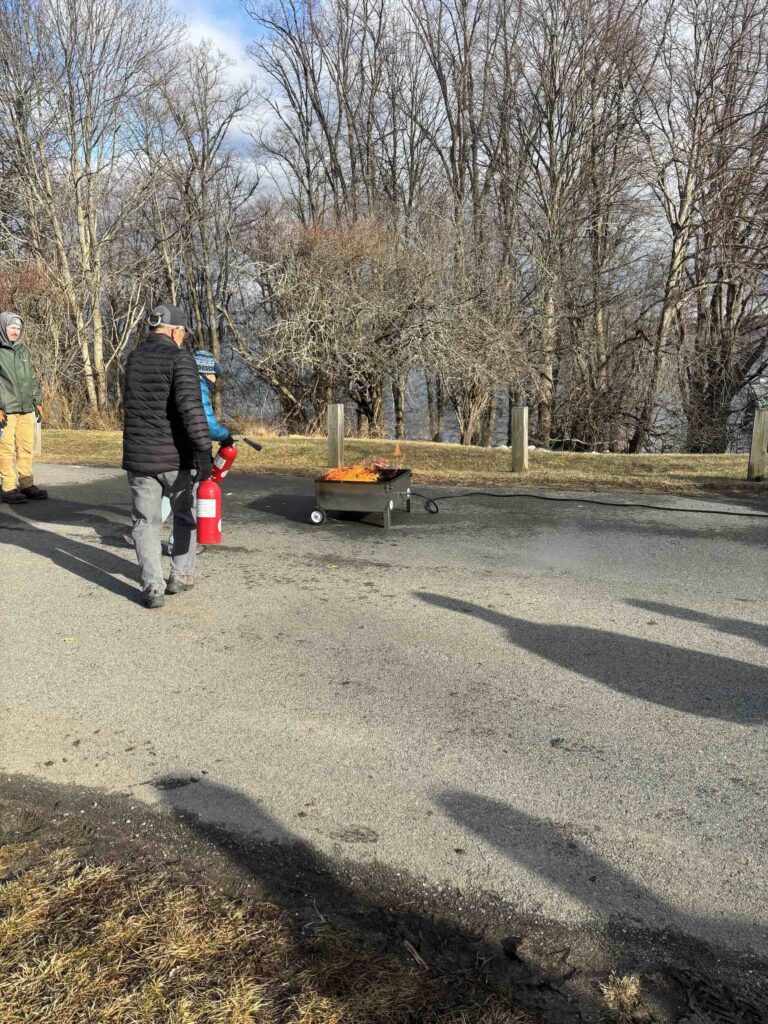
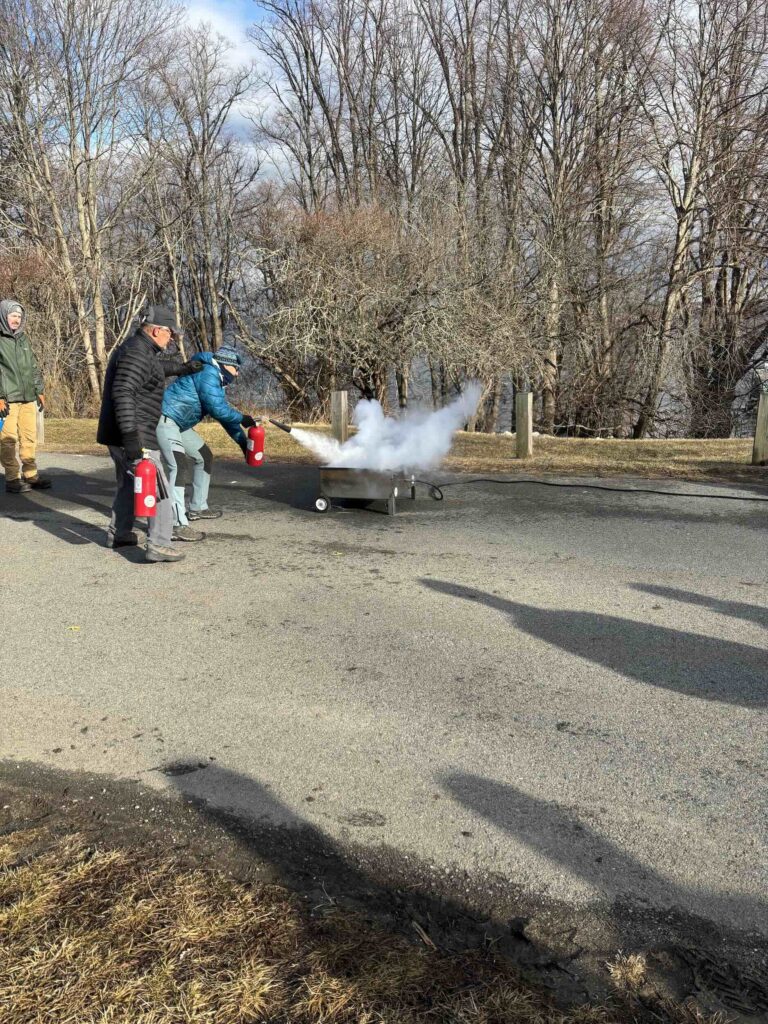
Takeaways
This course has me thinking a lot more about how we handle safety at sea. I realized there are some basic things I don’t know about Windara off the top of my head (like where the manual override to the bilge pump float switch is – it’s not on/near the electrical panel – I now know it’s under the nav desk), so we’re going to go through the boat next time we’re up there and make sure we’re both familiar.
We’re revamping our safety briefing for guests, updating our hull diagram, and printing up a VHF emergency script. Plus, we’re rethinking the location of our life raft and ditch bag (and we’re going to get in the habit of adding our important documents to it before passage).
Our safety gear is also getting an update – we bought new tethers (ours were an older style that’s no longer considered safe) and I bought a new Spinlock life jacket, which fits me better (I think part of my discomfort in the pool was that I’m too small for traditional hydrostatic PFDs). Additionally, we’ll be adding a few new tools, a Galerider drogue, and upgrading our first aid kit.
If you spend time offshore, even for short hops, I highly recommend finding a Safety at Sea seminar near you. We are our own first responders, and the more we know, the more we increase our chances of survival if the unthinkable happens. I came away from this course with so much new knowledge, some skills/knowledge areas to develop further, and a whole lot more confidence in dealing with emergencies at sea.
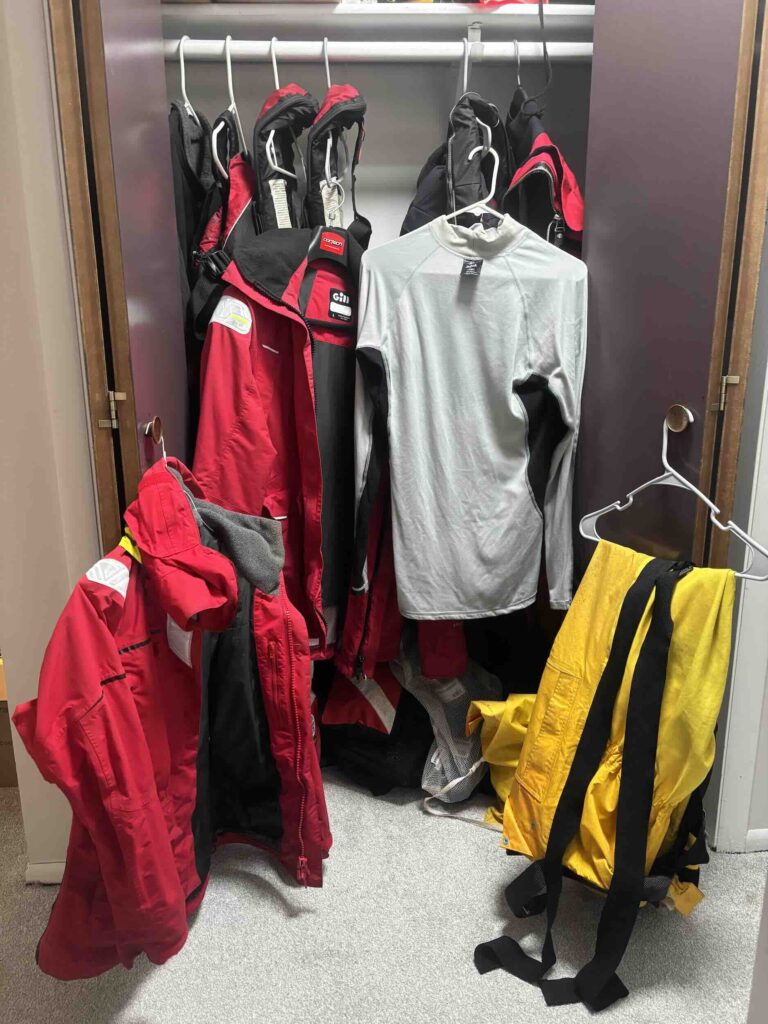
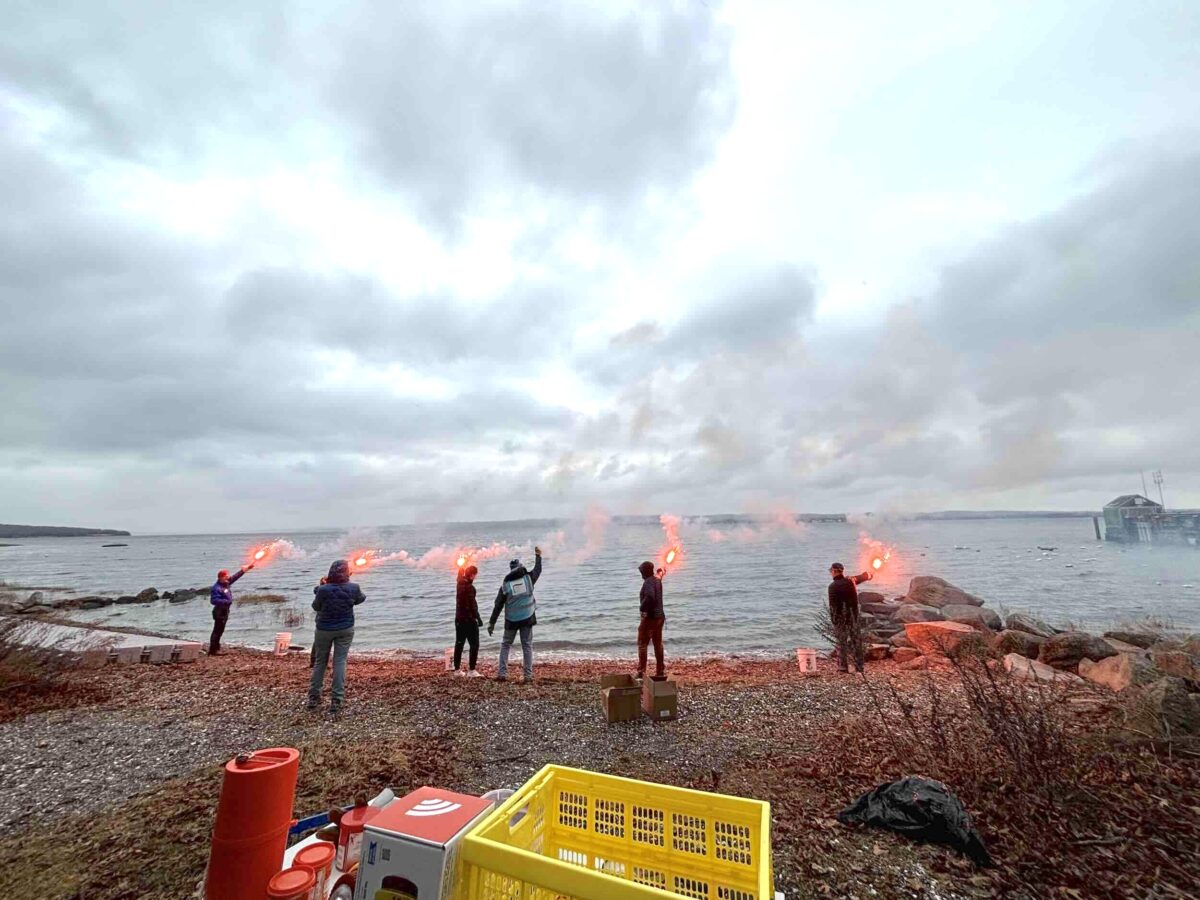
2 replies on “Safety at Sea”
Great recap of the course. I’m definitely going to look for one
S@S is a great course. The lessons learned and concepts taught have saved lives.
Did they let you play with one of the dewatering pumps the GC drops to boats? I was pretty impressed with capacity and its ability to deal with debris
Suggestion for a next step.
A wilderness first aid course. There are one and two day courses. Usually IME the 2 day includes CPR certification (or at least the option) and AED (limited application for you unless adding to the boat kit).
The better course, if you can find one, is a wilderness first aid afloat, water / maritime wilderness / offshore medicine course. Available, but not widely on the E coast let alone the NE (I couldn’t find one in NE). Most often offered in MD (Annapolis) or VA but Wilderness Medical Associates International is based out of Portland ME, maybe they could lead you to one in the NE.
A lot of search terms at the beginning of the previous paragraph, if your google fu is better than mine and you find one offered in the NE I’d be curious to know it. I have several people who have expressed interest but didn’t want to or couldn’t commit to make the trip to Annapolis to take it.